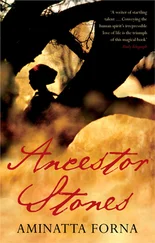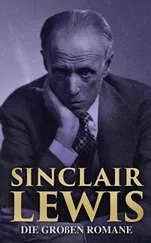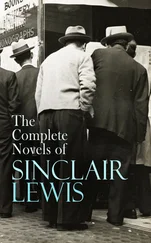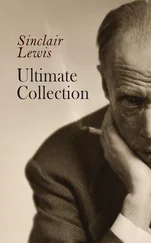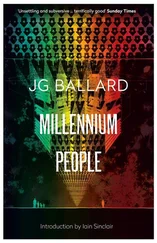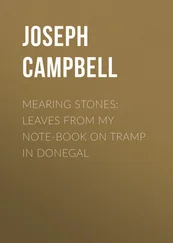I didn’t dispose of the User’s Guide dustwrapper without scanning it for additional information. There wasn’t any, a random (post-Pepper) iconographic sweep: Aldous Huxley, two (dead) Beatles, Presley, Warhol, Humphrey Bogart, Ronnie Reagan. Generic necrophilia. Freud, Dalí, Marilyn Monroe: faces looking for T-shirts. Torn newspapers. Motorways. A poster for Don Siegel’s Invasion of the Body Snatchers .
Graphic scrim. Lose the wrapper. Flip the lid.
A real index to go with its fictional predecessor.
Alphaville 14,19
America (Baudrillard) 182
American Films 22
Analog 203
Apocalypse Now 12,114
Big Sleep, The 181
Borges, Jorge Luis 236
Bowles, Paul 135
Brando, Marlon 8–9
Breton, André 85, 88, 89, 90, 99
Burroughs, William 91, 92, 97,126–36,140,181,182, 238
Bush, George 12, 35
Cabinet of Dr Caligari 90
Cain, James M. 66
Cartier-Bresson, Henri 63
cataclysm fiction 208–9
Céline 137
Citizen Kane 6, 181
Computers 225–7, 279
Conrad, Joseph 114–15,173,180, 209
And, yes, you’ll also namecheck: Eliot, Greene (and Green Berets ), Hitchcock, Dennis Hopper, Howard Hughes, inner space, insanity, R.D. Laing, Fritz Lang, Chris Marker, Henry Miller, Michael Moorcock (p. 190), physics, Poe, Roy Porter, Rear Window , Carol Reed, relativity, Nicolas Roeg, Jack Ruby, Jimmy Savile, R.L. Stevenson, Sunset Boulevard , television (5, 11, 24, 73, 82, 89,167–8,173,174, 225–7, 232, 236, 243), The Tempest , Vietnam War. And Darryl Zanuck.
Zanuck: Nostromoner? Old movies, run to the point of invisibility on the Irish provincial circuit, act like pre-electronic computers. Tap in wherever you like, surf the reference books, download the connections.
Zanuck in exile, Paris. Affair with Juliet Greco (model for Marina Fountain?). Zanuck as writer, his stories published by a hair-oil company. Talent recognised: scripts for Rin-Tin-Tin. 1924: The Lighthouse by the Sea . There it was, the Nostromo connection, bold as brass. The best place to keep a secret: in lights, the brightest bulbs you can find, above the marquee. Remember Nostromo’s last reel, the Isabels? The Capataz de Cargadores has arranged for the old Italian freedom-fighter to be appointed as lighthouse-keeper. He rows across the bay, courts the younger daughter, goes back for the buried silver. Is shot. Killed.
Zanuck works with Bill Wellman ( Maybe It’s Love , 1930). Wellman is a Nostromoner. Wellman directs Robert Mitchum.
WELLMAN: I make pictures. What do you do for a living?
MITCHUM: That, Dad, is a matter of opinion.
Mitchum, Wellman, Zanuck. They invade Europe. They smoke cigars. They talk Conrad. Zanuck cultivates the eye-patch directors — Raoul Walsh ( The Bowery , 1933) — before they lose their orbs. John Ford, he was another pirate. Another eye-patch (painted by Kitaj). Fritz Lang ( The Return of Frank James , 1940).
In Hastings, everything connects to everything. The British love their secret societies, confederacies of outcasts: Aleister Crowley expelled from most of them. The Hermetic Order of the Golden Dawn, O.T.O., Ma Ion, Kos: they make it their business to confirm writers in rituals of impotence, elective invisibility. Machen, Blackwood, A.E. Waite, Austin Spare, Walter Owen. The Redonda mob. Remember them? M.P. Shiel as ‘King’ of Redonda — an uninhabited islet near Antigua (map like Treasure Island , displacement like Conrad’s Isabels). John Gawsworth, Lawrence Durrell, Dylan Thomas: all members of the cult. Poetry has to go somewhere. W.B. Yeats, George Russell, Crowley: verse in freefall, from vision to bathos. Limping towards Hastings to die.
Ford Madox Ford: The Shifting of the Fire (1892)
M.P. Shiel: Shapes in the Fire (1896)
Walter Owen: The Mantra of the Fire (1947)
Jim Morrison (The Doors): Come on Baby, Light My Fire (as
featured in Apocalypse Now , 1979)
Alan Moore: Voice of the Fire (1996)
Fire on water. Cults of the coast. Explain this: I was walking up the long slope of London Road, in the direction of Silverhill (and, ultimately, the Ridge), an early expedition to locate the house where Crowley gave up the ghost. Two men, with their partners, in a Thai restaurant. They know each other but they aren’t sitting together. Nobody else in the place. One couple (J.G. Ballard and friend) in the window. With the other pair in the furthest dimmest recess: Nicolas Roeg (and protégée). Nostromoners in psychic communication? Regrets for Roeg’s film of Crash : never made? A proposed Ballard script for Nostromo ? As space opera.
I don’t believe in originality, just product. The book I was about to abandon — stones in the throat — all my useless research, confirmed one fact: my failure to rewrite Nostromo . Yes, you could construct a graph of rough equivalents, but there was no elegance in the match. Something missing: life. Forward momentum, a reason to turn the page. An absence at the centre: the human heart (as factored by Ford Madox Ford). I needed a collaborator, badly. I needed Jos Kaporal. Reborn. Brought home. On the case.
This is what I scribbled in my notebook:
Hastings = Sulaco
Brink’s — Mat Gold = Silver Ingots
Mickey O’Driscoll = The bandit Hernandez
Mocatta = Charles Gould
Norton = Nostromo
Hugo Manning = Captain Mitchell
Jos Kaporal (journalist, exile) = Martin Decoud
Olivia Fairlight-Jones = Antonia Avellanos
Arthur Norton (great-grandfather) = Dr Monygham
I’m not happy, for one very good reason, with this mirror-world: I should be Decoud — the cynicism, the fatal passion for Antonia (the dark lady). Antonia must be Ruth. Ruth Alsop. A splash of duty-free perfume (Calvin Kline One) on the inside of her left wrist. That man Decoud should never have left Paris. He should have retained Antonia: as a memory, a perfume to chase (through piano bars and bordellos).
His suicide, returned to Sulaco, is inevitable. The ‘triple death’ of Welsh mythology: gunshot while sitting on edge of boat (+ drowning) while dying of thirst. Decoud couldn’t hack loneliness, the bitter Crusoe existence of the sunbaked islet: ‘The solitude appeared like a great void, and the silence of the gulf like a tense, thin cord to which he hung suspended by both hands.’
I took a turn of the deck (the narrow balcony that ran from sea-facing view to town view). A photographer could do something with this, curves, sharp angles, balconies, railings. Whiteness. Light. Can’t you imagine those haughty nudes — in heels and sailors’ caps? Hastings was moving, walkers, cyclists, clrinking schools. Kaporal’s attic was still blue: an ultraviolet tanning cubicle.
And somebody — I fetched the binoculars … Ollie! — was in there, in the room. With a man. They were embracing. A large man in a black shirt: allowing himself to be hugged by a small, neat, agitated woman. A swimmer, who has been too far out, grabbing for a rock. If I didn’t know better — and my ability to connect names with faces was famously awful — I’d say: ‘Kaporal’. Another revenant. Another example of narrative punctuation refusing to stay punctuated.
Kaporal with Mocatta’s daughter, my fiancée? Ludicrous. The mother of my first child? My daughter. Under sleep, where all waters meet. I hope they call the babe Marina.
Conflicting emotions somersault, shirts in a washing-machine, as I run down the stairs. Jealousy, anger, relief: that Kaporal should return from the dead to rescue the stalled novel, that he should take Ollie off my hands — leaving the way clear for my pursuit of Marina Fountain.
Читать дальше




